ELAR 5.10
Author's purpose and craft: listening, speaking, reading, writing, and thinking using multiple texts. The student uses critical inquiry to analyze the authors' choices and how they influence and communicate meaning within a variety of texts. The student analyzes and applies author's craft purposefully in order to develop his or her own products and performances. The student is expected to:
- (1) explain the author's purpose and message within a
text;
- (A) analyze how the use of text structure contributes to the author's purpose;
- (B) analyze the author's use of print and graphic features to achieve specific purposes;
- (C) describe how the author's use of imagery, literal and figurative language such as simile and metaphor, and sound devices achieves specific purposes;
- (D) identify and understand the use of literary devices, including first- or third-person point of view;
- (E) examine how the author's use of language contributes to voice; and
- (F) explain the purpose of hyperbole, stereotyping, and anecdote.
- Free Plan
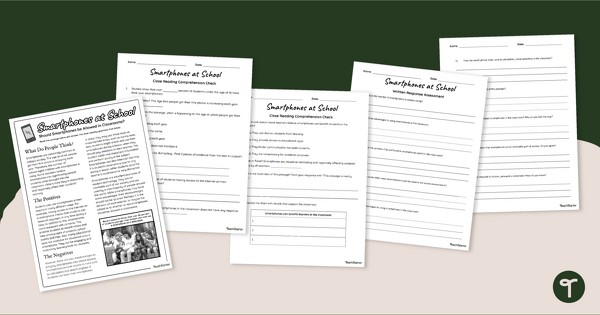
Should Smartphones Be Allowed in Class? Comprehension Worksheets
Decide if cellphones should be allowed in class and boost comprehension skills with a reading passage and comprehension test.
- Free Plan
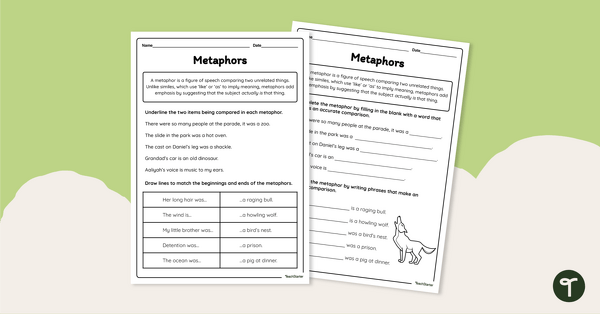
Metaphors Worksheet
Practice identifying and using metaphors with this differentiated metaphors worksheet.
- Plus Plan
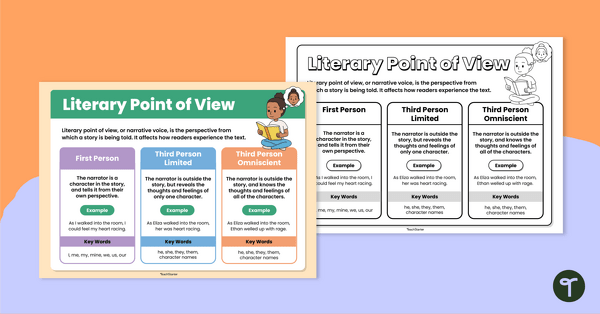
Types of Point of View in Literature Poster
Teach the types of point of view in literature with this classroom poster that explains first person, third person limited, and third person omniscient narration.
- Free Plan
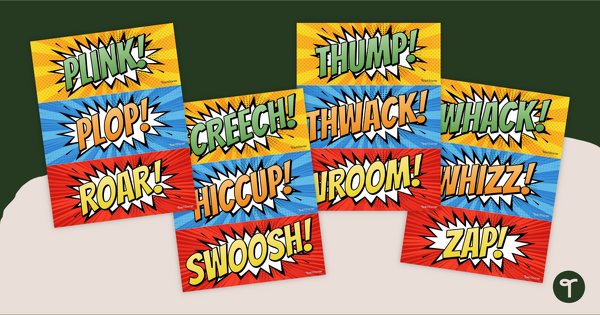
Onomatopoeia Words - Vocabulary Display
Display a fun onomatopoeia word wall in your classroom with printable cards containing onomatopoeia examples.
- Plus Plan
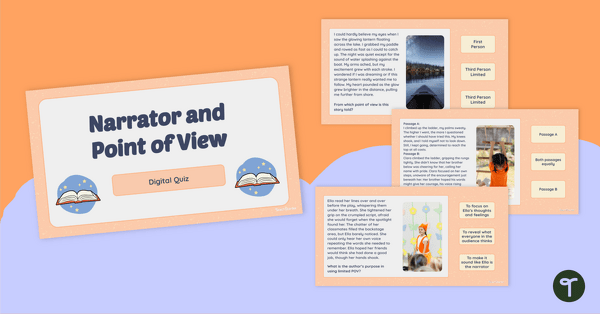
Narrator and Point of View Digital Quiz
Discover how narrator and point of view can be taught in a fun and engaging way with this interactive quiz designed to help elementary students become confident readers and critical thinkers.
- Plus Plan
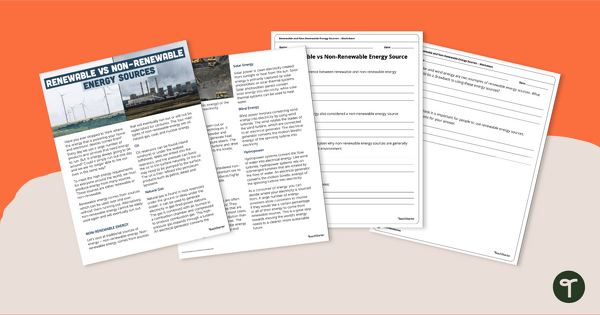
Renewable vs. Nonrenewable Energy Sources Worksheets
Discover the difference between renewable and nonrenewable energy sources with a comprehension passage and worksheet.
- Plus Plan
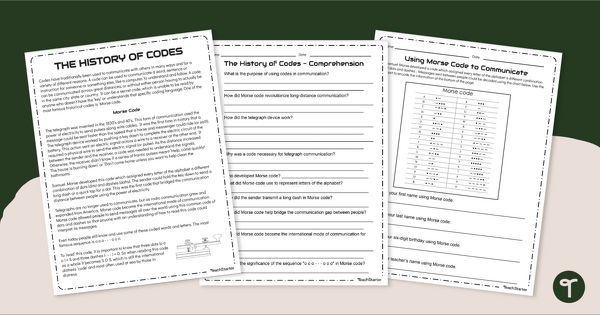
The History of Morse Code - Comprehension Worksheet
A comprehension activity relating to technologies and codes.
- Plus Plan
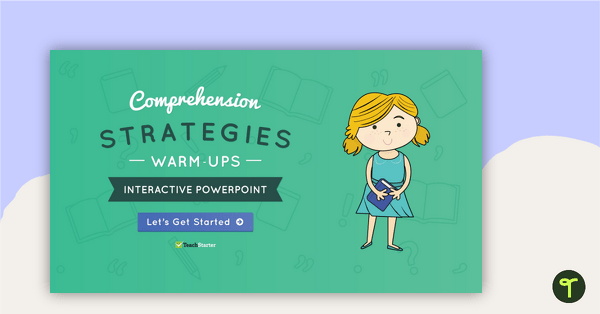
Comprehension Strategies – Interactive PowerPoint
An engaging 44 slide interactive PowerPoint to use in the classroom when introducing comprehension strategies.
- Plus Plan
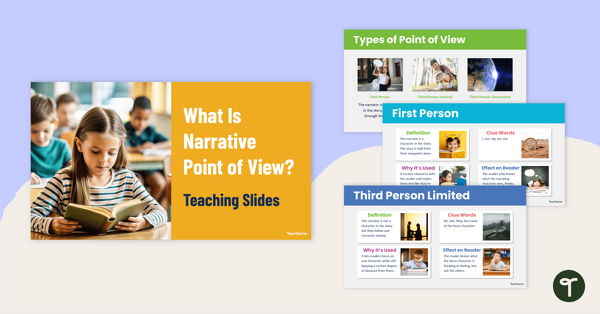
What Is Narrative Voice? Teaching Slides
Answer the question “What is narrative voice?” with this engaging slide deck that helps students understand first person, third person limited and third person omniscient narration.
- Plus Plan
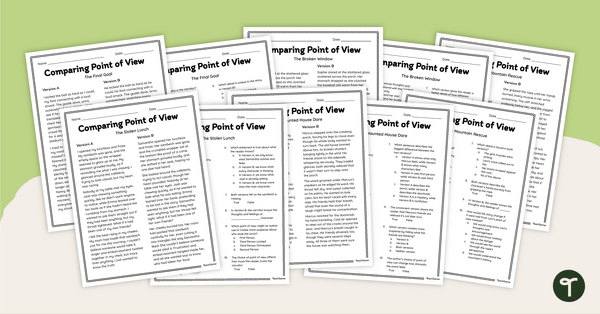
Comparing Narrator’s Voice Worksheets
Teach how narrator’s voice shapes the reader's experience of texts with this set of worksheets where students compare passages written from different points of view.
- Plus Plan
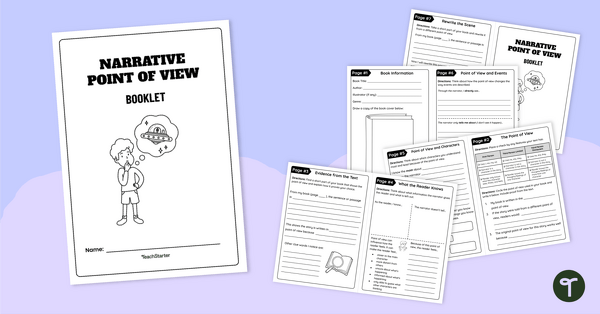
Point of View in Narration Booklet
Explore point of view in narration with this engaging mini book that helps students analyze the narrative voice of a book they have recently read.
- Plus Plan
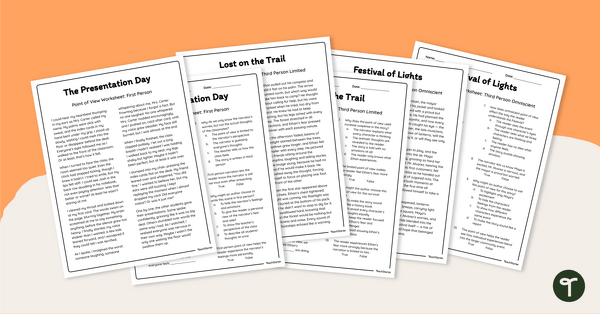
Narration and Point of View Worksheets
Use these narration and point of view comprehension passages to help students explore different narrative voices in literary texts.
- Plus Plan
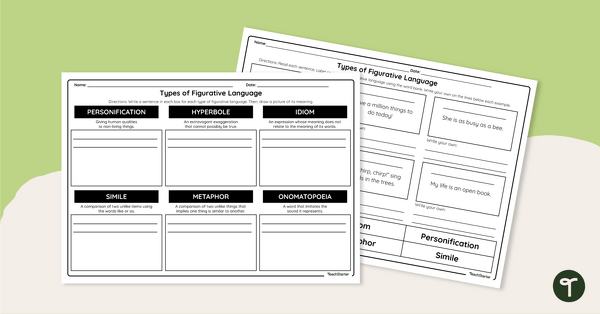
Types of Figurative Language - Worksheet
Practice identifying and creating examples of figurative language with this printable worksheet.
- Plus Plan
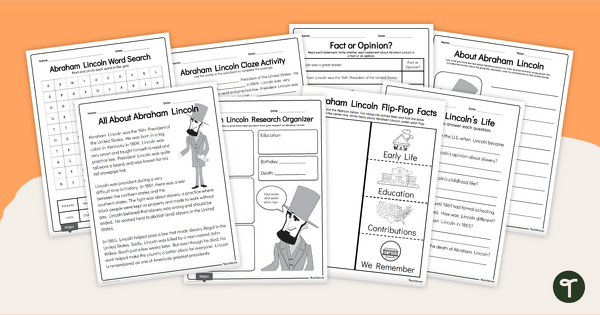
Abraham Lincoln - 3rd Grade Reading Comprehension Pack
Celebrate Presidents' Day and discover the accomplishments of Abraham Lincoln with a printable reading comprehension activity pack for 3rd grade and up.
- Plus Plan
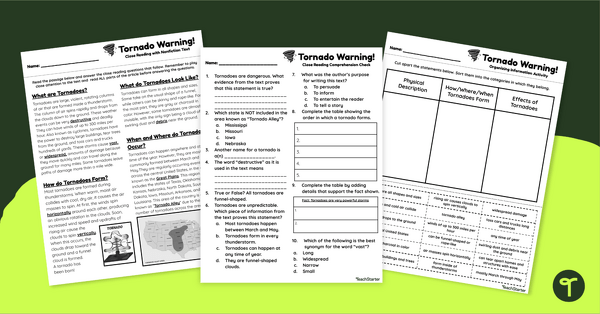
4th Grade Writing Worksheets: Tornado Text-Based Writing
Enhance your students' comprehension, vocabulary, and writing skills using 4th Grade writing worksheets and a high-interest reading passage about Tornadoes.
- Plus Plan
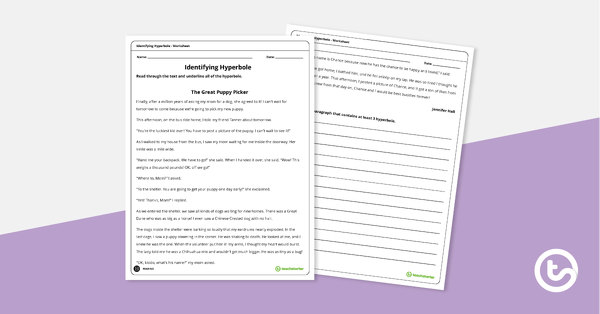
Identifying Hyperbole - Worksheet
A worksheet to practice identifying hyperbole in a piece of text.
- Plus Plan
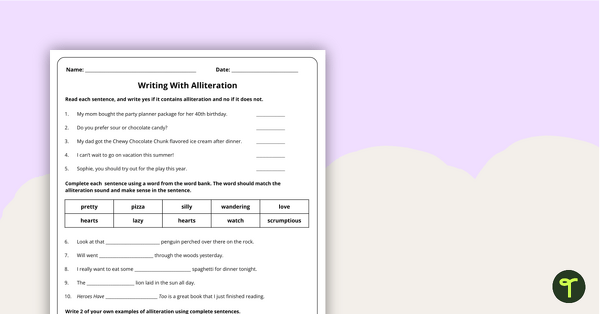
Writing With Alliteration Worksheet
Identify and create alliteration patterns in texts.
- Free Plan
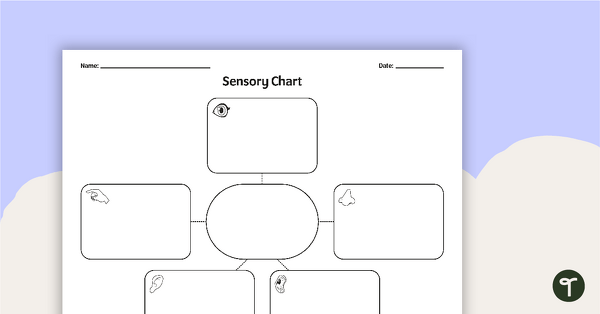
Sensory Chart Graphic Organizer
A graphic organizer for students to use when categorizing sensory details.
- Plus Plan
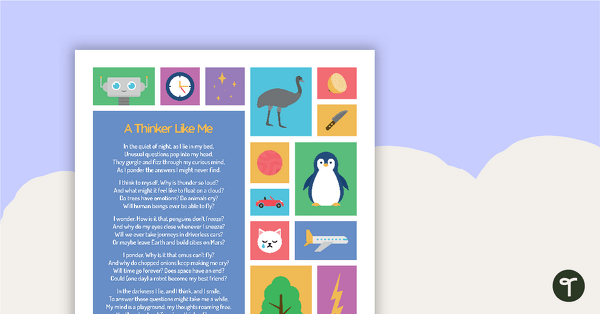
A Thinker Like Me Poem - Comprehension Worksheet
A comprehension worksheet paired with a poem about a thinker.
- Free Plan
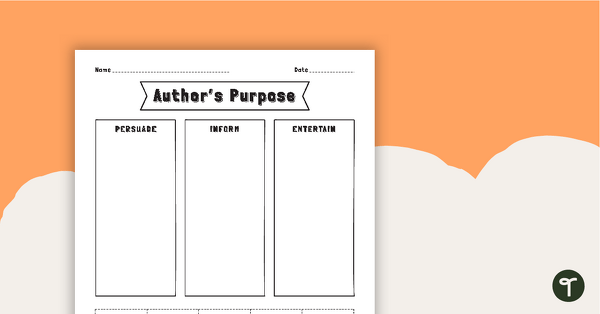
Author's Purpose - Sorting Worksheet
A teaching resource to help teach your students about author's purpose.
- Free Plan
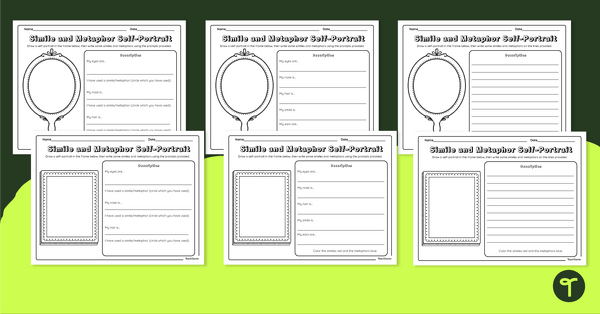
Simile and Metaphor Self-Portrait Worksheet
Teach students about similes and metaphors by asking them to describe... themselves!
- Plus Plan
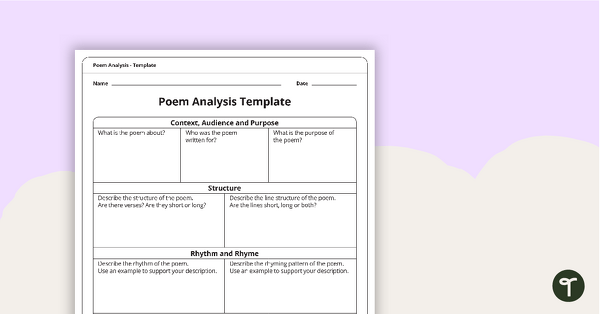
Poetry Analysis Template
A template for students to use when analyzing a poem.
- Plus Plan
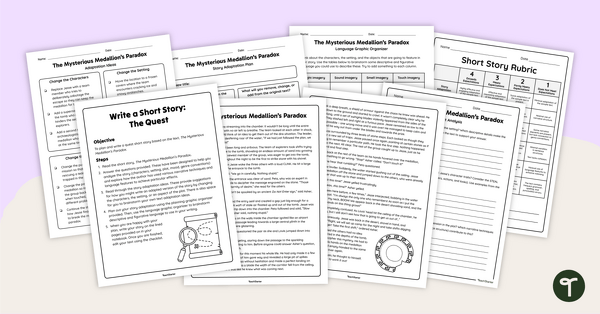
Write a Short Story – The Quest
Get your students analyzing and writing a quest story with this engaging and fully scaffolded writing project booklet.
- Plus Plan
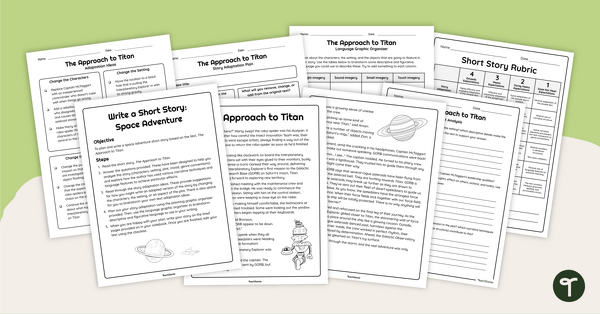
Write a Short Story – Adventure in Space
Get your students analyzing and writing adventure in space stories with this engaging and fully scaffolded writing project booklet.
- Plus Plan
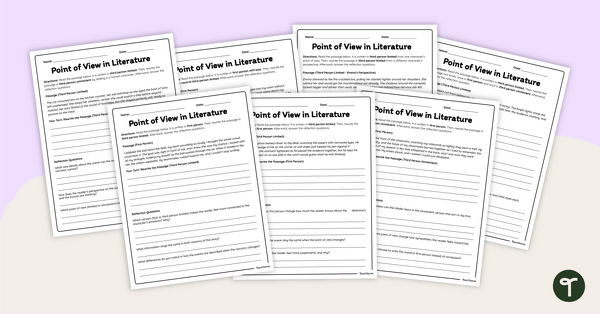
Narrative Voice Writing Prompts
Explore narrative voice with this set of engaging worksheets that require students to write literary passages in different points of view.
- Plus Plan
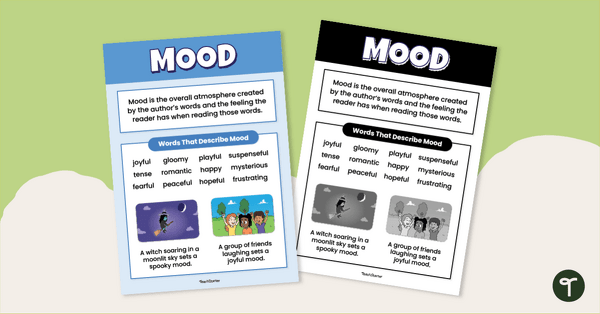
Mood Anchor Chart- Literary Element Poster
Introduce your students to mood, the atmosphere-creating literary element, with a printable Mood Anchor Chart.
- Plus Plan
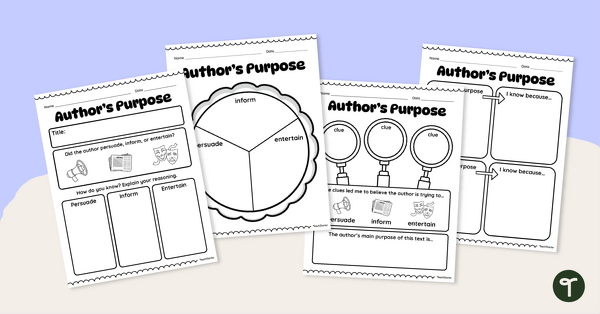
Author’s Purpose Graphic Organizer Pack
Explore the purpose of an author's writing with these Author's Purpose Graphic Organizers.
- Plus Plan
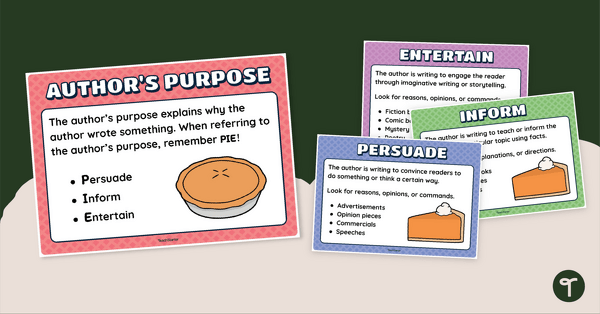
Author's Purpose Anchor Chart Set
Display this set of Author’s Purpose Pie posters to help students remember the various reasons authors write.
- Plus Plan
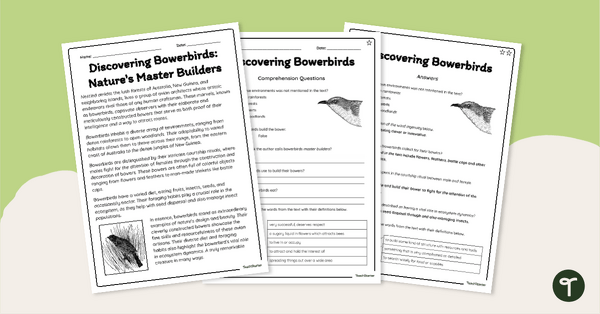
Bowerbird Comprehension Worksheets
Learn all about the wonderful world of Bowerbirds all while practicing comprehension skills.
- Plus Plan
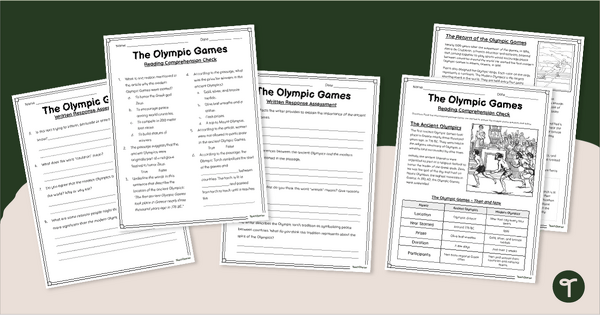
The Olympic Games - Reading Comprehension Task
Encourage students to apply a range of comprehension and writing skills when finding out interesting fun facts about the Olympics with a printable reading comprehension worksheet pack.
- Plus Plan
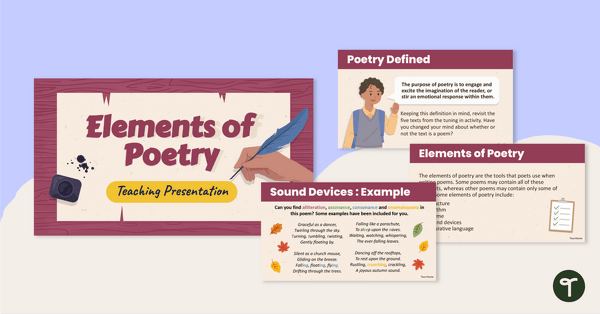
Elements of Poetry Teaching Slides
Explore the key elements of poetry with your students using this comprehensive and age-appropriate slide deck perfect for your poetry writing unit.
- Plus Plan
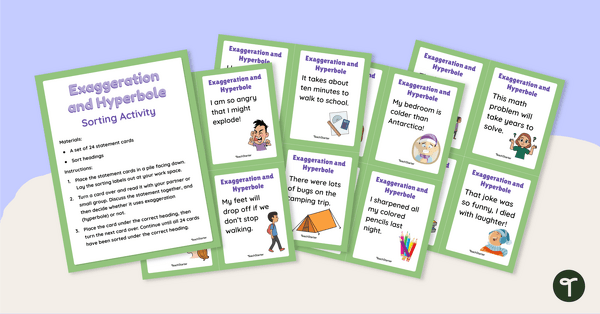
Exaggeration and Hyperbole Sorting Activity
Explore examples of hyperbole with your students using this set of 24 sorting cards perfect for your reading centers.